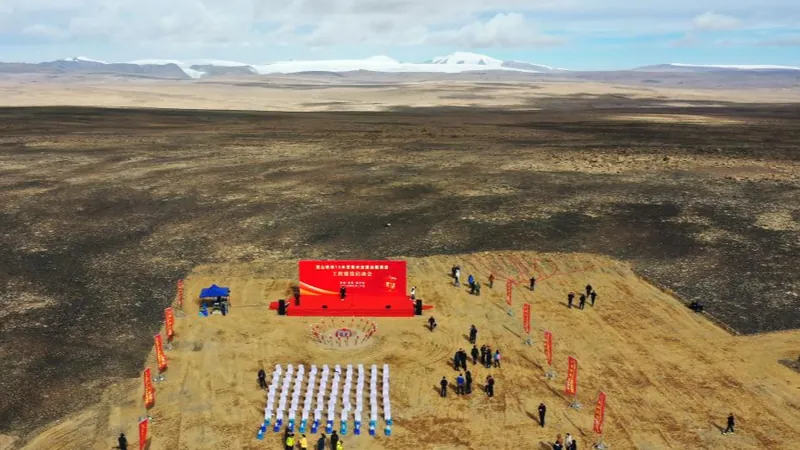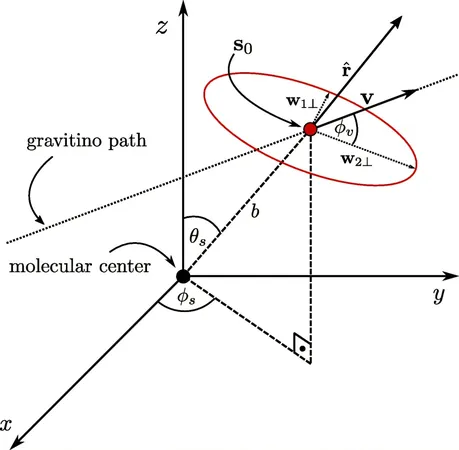
China Unveils Ambitious 15-Meter Telescope on the World’s Highest Plateau
2025-09-21
Author: Charlotte
A Bold New Venture in Astronomy
In a groundbreaking move, China has officially kicked off the construction of its latest astronomical wonder—the Xue-shan-mu-chang 15-meter SubMillimeter Telescope (XSMT). This ambitious project, launched on the Qinghai-Tibet Plateau, is poised to revolutionize the country's astronomical research capabilities.
Reaching New Heights—Literally!
Set to rise in Delingha, Qinghai Province, the telescope will tower at an impressive altitude of 4,800 meters. Spearheaded by the esteemed Purple Mountain Observatory of the Chinese Academy of Sciences, this state-of-the-art facility aims for completion by 2027.
Unlocking the Mysteries of the Universe
Equipped to penetrate the dense interstellar dust obscuring star and planet formation, the XSMT will utilize submillimeter waves—technology traditional optical telescopes cannot harness. By doing so, it promises to unveil the cosmic secrets hidden in cold, dark gases and track the origin of molecules that could lead to understanding life beyond Earth.
The Perfect Spot for Cosmic Observation
Located on the Qinghai-Tibet Plateau, often dubbed 'the roof of the world,' the telescope is set in an area with exceptionally low water vapor and minimal human disruption—ideal conditions for submillimeter wave observations.
Bridging a Critical Gap in Astronomy
Currently, China's astronomical landscape lacks operational facilities for submillimeter wave research. The introduction of the XSMT not only bridges this gap but also positions China at the cutting edge of frontier astronomical studies.
Focusing on Four Key Areas
Li Jing, a researcher from the Purple Mountain Observatory, highlighted that the XSMT will target four key scientific areas: extragalactic astronomy, the structure of the Milky Way, time-domain astronomy, and astrochemistry.
Joining the Ranks of Global Leaders in Astronomy
Once operational, the XSMT will complement the next-generation Event Horizon Telescope, an Earth-sized virtual network, enhancing China's ability to capture live images of black holes and boosting its global competitiveness in the field of astronomy.
The Future of Cosmic Exploration
As detailed in an article published in the journal SCIENCE CHINA Physics, Mechanics & Astronomy, the XSMT represents a leap toward unraveling some of the universe’s most profound mysteries, marking China’s ascent in the astronomical arena.









 Brasil (PT)
Brasil (PT)
 Canada (EN)
Canada (EN)
 Chile (ES)
Chile (ES)
 Česko (CS)
Česko (CS)
 대한민국 (KO)
대한민국 (KO)
 España (ES)
España (ES)
 France (FR)
France (FR)
 Hong Kong (EN)
Hong Kong (EN)
 Italia (IT)
Italia (IT)
 日本 (JA)
日本 (JA)
 Magyarország (HU)
Magyarország (HU)
 Norge (NO)
Norge (NO)
 Polska (PL)
Polska (PL)
 Schweiz (DE)
Schweiz (DE)
 Singapore (EN)
Singapore (EN)
 Sverige (SV)
Sverige (SV)
 Suomi (FI)
Suomi (FI)
 Türkiye (TR)
Türkiye (TR)
 الإمارات العربية المتحدة (AR)
الإمارات العربية المتحدة (AR)